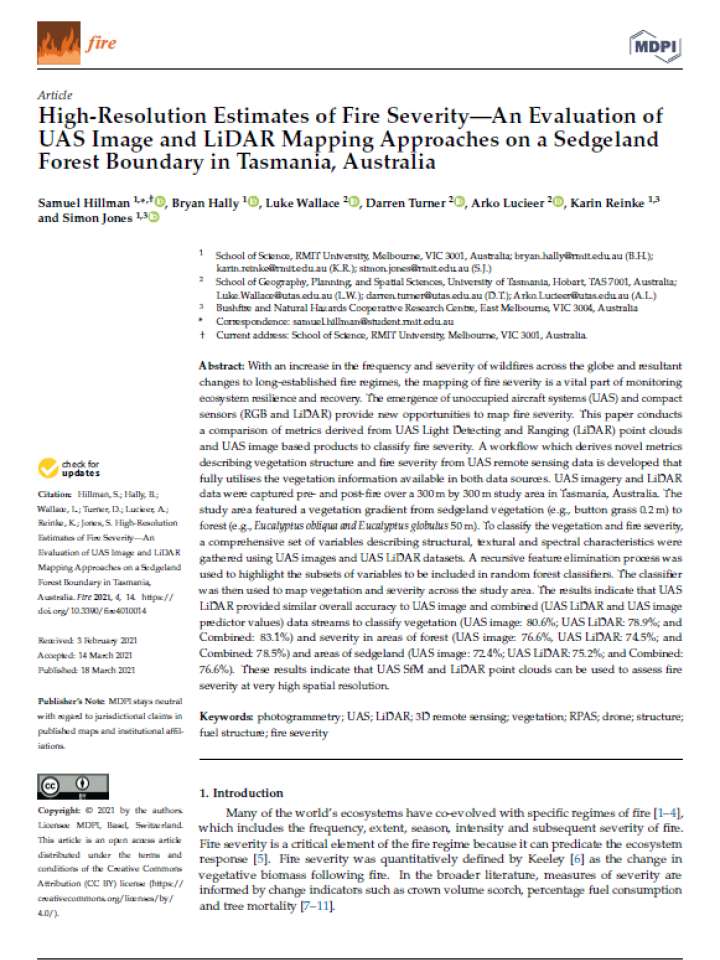High-resolution estimates of fire severity—an evaluation of UAS image and LiDAR mapping approaches on a sedgeland forest boundary in Tasmania, Australia
This paper discusses how an increase in the frequency and severity of wildfires across the globe and resultant changes to long-established fire regimes, and the mapping of fire severity is a vital part of monitoring ecosystem resilience and recovery. It talks about how the emergence of unoccupied aircraft systems (UAS) and compact sensors (RGB and LiDAR) provide new opportunities to map fire severity.
The paper conducts a comparison of metrics derived from UAS Light Detecting and Ranging (LiDAR) point clouds and UAS image based products to classify fire severity. A workflow which derives novel metrics describing vegetation structure and fire severity from UAS remote sensing data is developed that fully utilises the vegetation information available in both data sources. UAS imagery and LiDAR data were captured pre- and post-fire over a 300 by 300 study area in Tasmania, Australia. The study area featured a vegetation gradient from sedgeland vegetation (e.g., button grass) to forest (e.g., Eucalyptus obliqua and Eucalyptus globulus 50).
To classify the vegetation and fire severity, a comprehensive set of variables describing structural, textural and spectral characteristics were gathered using UAS images and UAS LiDAR datasets. A recursive feature elimination process was used to highlight the subsets of variables to be included in random forest classifiers. The classifier was then used to map vegetation and severity across the study area. The results indicate that UAS LiDAR provided similar overall accuracy to UAS image and combined data streams to classify vegetation. These results indicate that UAS SfM and LiDAR point clouds can be used to assess fire severity at very high spatial resolution
Explore further
